FO välitööd 2016
|
Kaasaegsed usundid Clavie põletamine. Burghead Šotimaal |
Contemporary beliefs Burning Clavie. Burghead, Scotland |
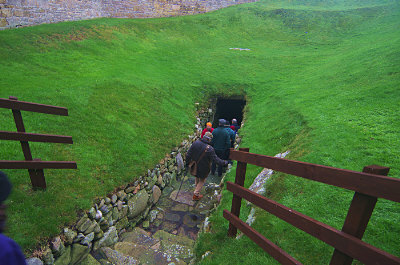
|

|
| Piktide allikas/Pictish well | Clavie valmistajad/They made Clavie |
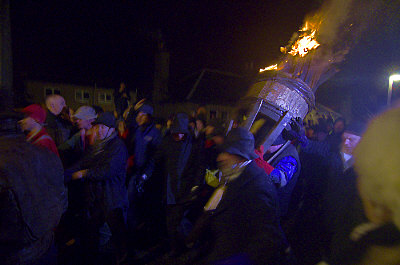
|
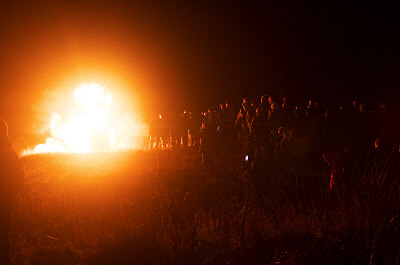
|
|
Rongkäik/Procession Välitöödel vaadeldi Clavie põletamise püha (väga vana aastavahetuse komme) ja piktide monumente. 11. jaanuaril toimub väikeses Burgheadi külas Šotimaa rannikul iidne paganlik tseremoonia, Clavie põletamine, rongkäiguga tähistakse gregooriuse kalendri järgi uusaasta päeva.
|
Clavie põletamine/Burning Clavie The fieldwork demonstrated the custom of Burning Clavie, and footsteps of the picts, a confederation of Celtic-speaking peoples who lived in what is today eastern and northern Scotland during the Late British Iron Age and Early Medieval periods.
|
|
| |
|
Findhorni Fond |
Findhorn Foundation |

|
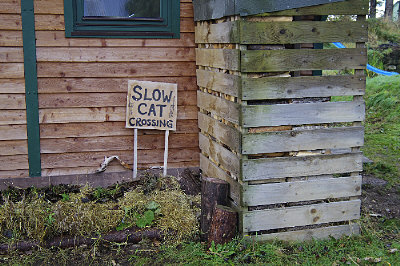
|
| Euroopa vanem spirituaalne kommuun ja ökoküla (alates 1962). | The Findhorn Foundation is one of the oldist spirituaal commune and ecovillage (f. 1962). |
Findhorni fond on Šoti heategevusühing, mis registreeriti 1972. aastal ja mille moodustasid Findhorni ökoküla vaimsed kogukonna. Tegemist on Suurbritannia ühe suurema vaimse kogukonnaga, mis on koduks tuhandetele elanikele enam kui 40 riigist. Fond juhib haridusprogramme, seal tegutseb umbes 40 kogukonna ettevõtet, sh Findhorn Press ja alternatiivmeditsiini keskus. | FF is a Scottish charitable trust registered in 1972, formed by the spiritual community at the Findhorn Ecovillage, one of the largest intentional communities in Britain. It has been home to thousands of residents from more than 40 countries. The Foundation runs educational programmes for the Findhorn community, and houses about 40 community businesses such as the Findhorn Press and an alternative medicine centre. |
|
| |
|
Bulgaaria megaliidid Beglik TashMare Kõiva, Andres Kuperjanov |
Bulgarian megaliths Beglik TashMare Kõiva, Andres Kuperjanov |
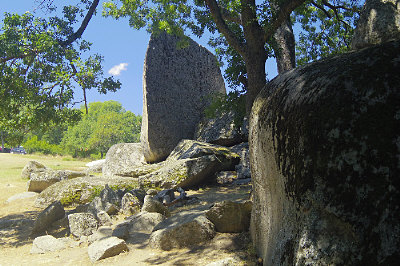
|
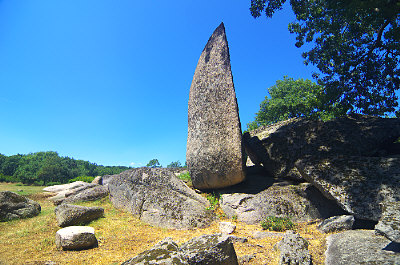
|
|
Beglik Tash
|
Menhir |
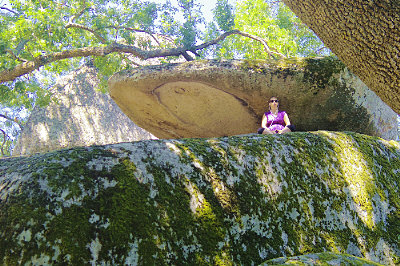
|
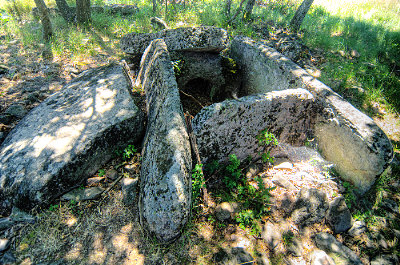
|
|
Mediteerib/Meditation Beglik Tash on eelajalooline kivi pühamu, mis asub Bulgaaria Musta mere lõunarannikul, mõni kilomeeter Primorsko linnast põhja pool. Traakia hõimud kasutasid seda rauaajal. Tänapäeval on see oluline koht erinevate usurühmituste kogunemiseks.
|
Lähedane dolmen/Nearby dolmen Beglik Tash is a prehistoric rock sanctuary situated on the southern Black Sea coast of Bulgaria, a few kilometers north of the city of Primorsko. It was re-used by the Thracian tribes in the Iron Age. Today it is an important place for regious groups. |
|
| |
|
Bulgaaria: Müüdid, usk, moderniteet Miškova Niva |
Bulgaria: Myths, religion, modernity Mishkova Niva |
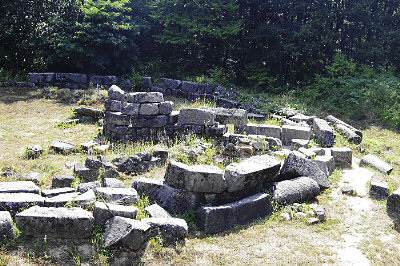
|
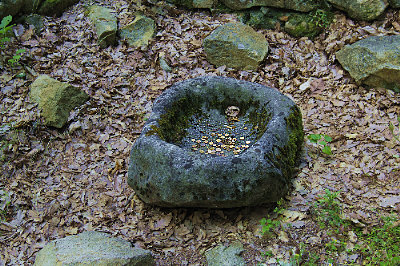
|
|
Miškova Niva – traakia kultuspaik avastati aastal 1981-83. See asub Golyamoto gradishte kaguosas, umbes 3 km Malko Tarnovost ja Türgi Vabariigi piiri äääres. Paigas asub suur hoonekompleks: kindlust Golyamo gradishte tipus, kaevandused, nekropolis, kaitseehitised ja linna varemed. Müüdid seovad paika nt Bast (Bastet) hauaga - Egiptuse armujumalanna, päikesejumal Ra tütar ja Mihos (Maahes, Miysis) emaga. Kohapeal leiab väiksemaid ohvriande ikoonide, raha ja esemete näol. |
Mishkova Niva – Tracian Cult complex was found in 1981-83. It is located in the Mishkova niva area (Bachvarova koliba) along the south-eastern slope of Golyamoto gradishte, about 3 km south-westwards from Malko Tarnovo, next to the state boundary with the Republic of Turkey. The sanctuary is part of a big complex which consists of a fortress on the Golyamo Gradishte top, mines in the foothills, a mound necropolis, fortified buildings and urban remains. Popular myths connect local sanctuary with the tomb of Bast (Bastet) - the Egyptian goddess of Love, Daughter of the sun god Ra and mother of Mihos (Maahes, Miysis). Smaller offering as icons, money and diferents objects can found. |
|
|
|
|
Malko Tarnovo
|
Malko Tarnovo
|
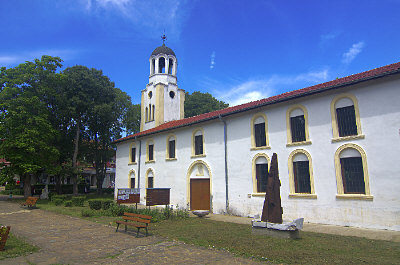
|
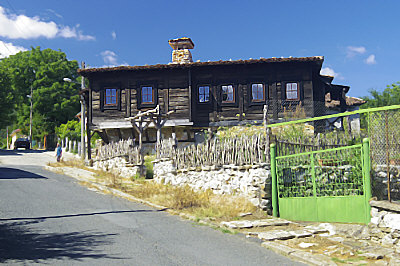
|
|
Malko Tarnovo asub kõigest 5 km kaugusel Türgi piirist ja paistab silma mitmete karismaatiliste kristlike kogudustega, kohalikke ajaloomuuseume on tervelt kolm, elanikke 2500. Bulgaaria ajaloomuuseumid on kohaliku identiteedi ja kultuuri erijoonte parimad esitajad . Huvitavate kohalike maskeerimistavade kõrval on näha nn koera päeva kombeid, Ottomani impeeriumi aegseid birelgioosseid hauatähiseid jm. |
Malko Tarnovo, located only 5 km from the Turkish border and stands out with several charismatic Christian churches. There locate three local history museums, there lives 2500 inhabitants. The Bulgarian History Museums are the best performers of local identity and cultural characteristics. Alongside interesting local disguises, there are a so-called dog-day customs, bi-religious gravestones from the Ottoman Empire, etc. |
Sozopol | Sozopol |
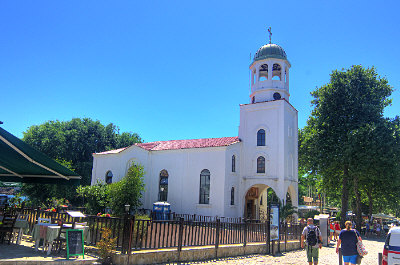
|
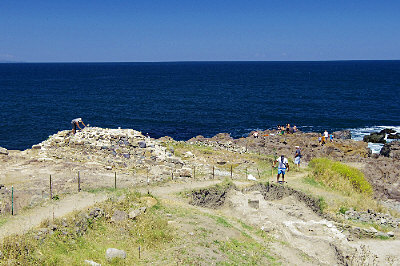
|
|
Sozopol on üks vanimaid traakia linnu Musta mere rannikul. Linn asutati 7 sajandil eKr kreeka kolonistide poolt. Hiljutised arheoloogilised kaevamised on paljastanud iidse linna ehitis, sealhulgas Apollo templi osi (6.–5. sajandi lõpp eKr); hellenismi perioodi ovaalse altari ja templi (4. sajand eKr).
|
Sozopol is one of the oldest towns on Bulgarian Thrace's Black Sea coast. The town was founded in the 7th century BC by Greek colonists. Recent excavations have revealed parts of the ancient city including: a temple complex (late 6th - early 5th century BC) presumably belonging to the famous temple of Apollo; an oval altar and a temple from the Hellenistic period (4th century BC).
|
Hisaria | Hisaria |
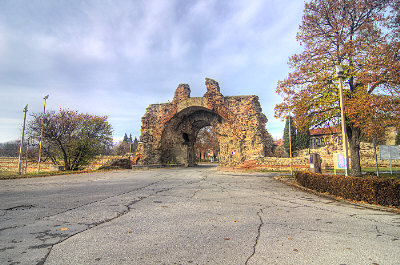
|

|
|
Hisaria – traakia linn, hilisem Vana-Rooma linn Diocletianopolis, mille hiigelväravad ja kaitsemüürid on tänaseni säilinud, nagu ka mineraalveeallikad. On teada, et terme külastas imperaator.
|
Hisaria - the old Tracian city, an ancient Roman city of Diocletianopolis, the enormous walls of which still stand close to their original height for the majority of their circuit. The ancient city lies largely unencumbered by the adjacent modern town. In the centre of the park are still over two dozen hot mineral springs. It was a famous resort even in those times, which is proved by the fact that emperor Septimius Severus visited the city.
|
Kabile | Kabile |

|
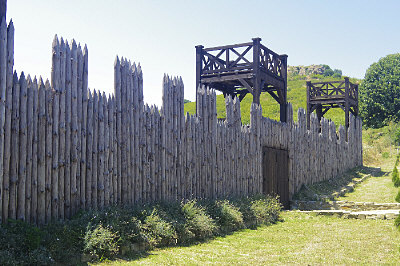
|
|
Traakia kuningalinn Kabile või Kabyle on rajatud 2 aastatuhende lõpus eKr oli üks traaklaste tähtsamaid linnu koos kuningapaleega. Linna vallutas Madedoonia Philip II 341 eKr ja kohast kujundati Vana-Kreeka Polise. Pärast Aleksander Suure impeeriumi varisemist 3. sajandil eKr valitsesid Kabiles taas traaklased. Roomlased vallutasid linna 71 eKr, sellest kujundati üks suuremaid Rooma sõjaväebaase eluasemega vähemalt 600 sõdurile ja eraldi elupaik ohvitseridele.
|
The ancient Thracian royal city of Kabile, dating from the end of the 2nd millennium BCE, was located 10 km from current-day Yambol. It was one of Thracians' most important cities and contained one of the kings' palaces. The city was conquered by King Philip II of Macedon in 341 BCE and was re-established as an Ancient Greek polis. After the collapse of Alexander the Great’s empire in the 3rd century BCE, Kabile was ruled by the Thracians once again. It was conquered by the Romans in 71 BCE and later incorporated into the Roman province of Thrace. By 136 CE, Kabile was one of the largest Roman military bases in the region housing at least 600 soldiers. A large residence for military officers has recently been excavated in the archaeological park at Kabile.
|
|
| |
|
Elav usund, ajalugu ja usuliikumised UK Stonehenge |
Vernacular religion, history and locality UK Stonehenge |
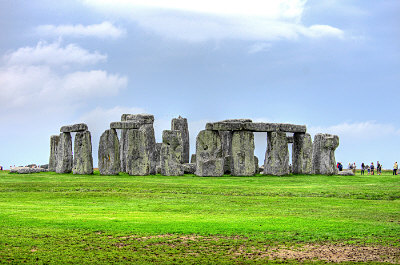
|
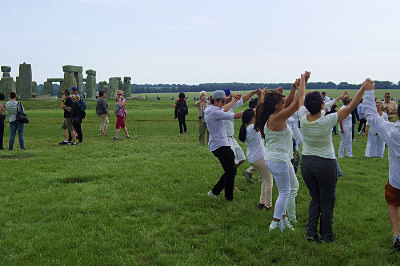
|
|
Stonehenge on eelajalooline monument Inglismaal Wiltshire'is, Amesburist kolm km läänes. See koosneb seisvate kivide ringist, igaüks on umbes 4 m kõrge, 2,1 m lai ja kaalub umbes 25 tonni. Loodud 3100 eKr., tänänapäeval oluline kultuspaiuk kaasaegsetele usurühmadele. |
Stonehenge is a prehistoric monument in Wiltshire, England, two miles (3 km) west of Amesbury. It consists of a ring of standing stones, each around 13 feet (4.0 m) high, seven feet (2.1 m) wide, and weighing around 25 tons. Created 3100 BC, it isa n important cultic place for contempporary religious groups |
|
Avebury |
Avebury |
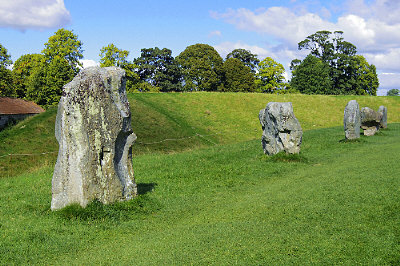
|
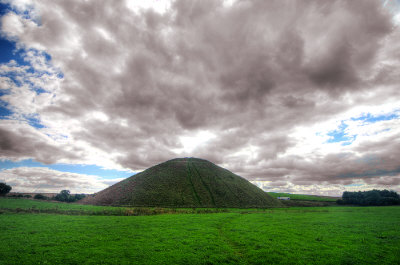
|
|
Avebury Avebury henge ja kiviringid on eelajaloolise Suurbritannia üks suurimaid mälestisi. Umbes aastatel 2850 eKr kuni 2200 eKr, ehitatud paik hoomab suuri kiviringe
|
Silbury Hill Avebury henge and stone circles are one of the greatest marvels of prehistoric Britain. Built and much altered during the Neolithic period, roughly between 2850 BC and 2200 BC, the henge survives as a huge circular bank and ditch, encircling an area that includes part of Avebury village. Within the henge is the largest stone circle in Britain - originally of about 100 stones - which in turn encloses two smaller stone circles.
|
|
Glastonbury |
Glastonbury |
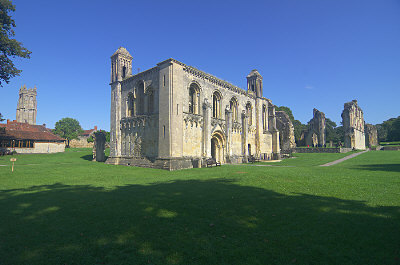
|
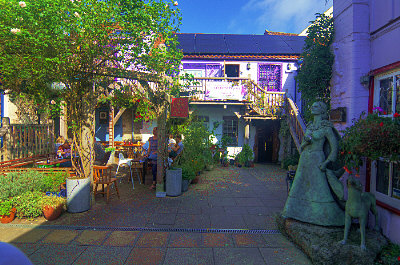
|
|
Glastonbury Somersetis on asustatud alates neoliitikumist. Vanim klooster rajati 7. sajandil ja 4. sajandil oli see üks rikkamaid ja võimsamaid kloostreid Inglismaal.
|
Glastonbury in Somerset, England, The town has been inhabited since Neolithic times. The abbey was founded in the 7th century destroyed by a major fire in 1184. during 4th century was one of the richest and most powerful monasteries in England.
|
|
| |
|
Elav usund, ajalugu ja usuliikumised Bosnia and Herzegovina Medjugorje |
Vernacular religion, history and locality Bosnia and Herzegovina Medjugorje |

|

|
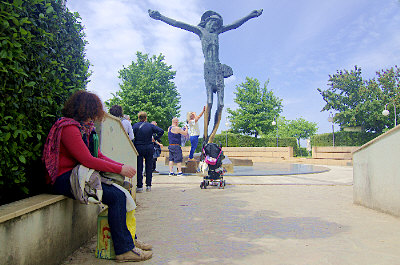
|
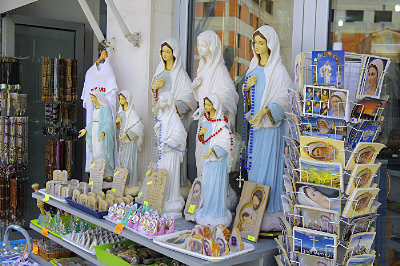
|
|
Alates 1981. aastast, kui kuus kohalikku last väitsid, et neile ilmutas Õnnistatud Neitsi Maarja, muutus Medjugorje Euroopas tähtsuselt kolmandaks katoliku palverännakute paigaks ja usukeskuseks. Igal aastal külastab paika üle miljoni inimese. |
Since 1981, when six local children said they had seen visions of the Blessed Virgin Mary, Medjugorje has become a destination of Catholic pilgrimage. Medjugorje has become one of the most popular pilgrimage sites for Catholics in the world and has turned into Europe's third most important apparition site, where each year more than 1 million people visit. |
|
| |
|
Vernakulaarsed praktikad versus ametlikud praktikad - minevik ja olevik Mostar Bosnia and Herzegovina |
Vernacular activities vs official activities - past and present Mostar Bosnia and Herzegovina |
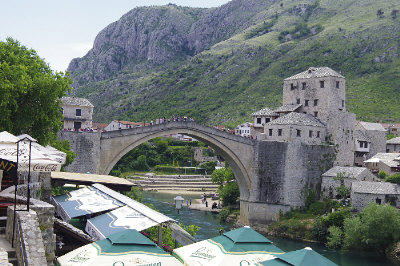
|
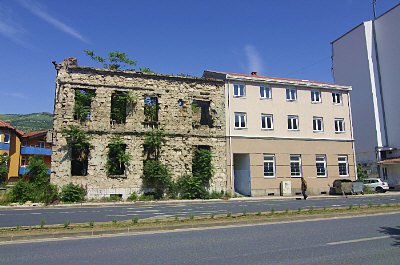
|
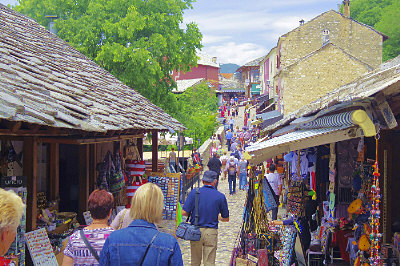
|

|
|
Mostar on üks jugoslaavia sõjas (algas siin 1992) enim kannatanud linnadest, suurem osa kesklinnast hävines.
|
Mostar was one of the most suffered town in Yugoslavian war (started 1992). A lot of the buildings was demolished.
|
|
| |
|
Kohalik identiteet tänapäeval Troonide mäng Dubrovnik, Horvaatia |
Modern local identity Game of Thrones Dubrovnik, Croatia |

|
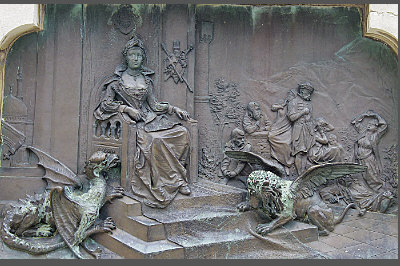
|
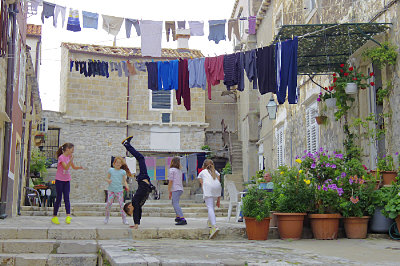
|

|
|
Seitmendal sajandil rajatud Dubrovniku vanalinnas on filmitud mitmeid olulisi Troonide mängu stseene, kokku umbes 16 erinevas kohas. |
The Old Town of Dubrovnik was founded in the 7th Century, and there are several sites (about 16) in the Old City where Game of Thrones was filmed.
|
|
| |
|
Etnobioloogia interdistsiplinaarne suvekool Valgevenes Minsk, Ljuban Valgevene |
Interdisciplinary summer school of ethnobiology in Belarus Minsk, Ljuban Belarus |
|
1.–18. maini toimus etnobioloogia interdistsiplinaarne suvekool Valgevenes. Osakonna töötajad Renata Sõukand, Raivo Kalle ja Mare Kõiva jagasid oma kogemusi praktilise töö käigus. Koolituse teoreetiline osa toimus Minskis ja praktiline osa Ljubani regioonis. Välitööd assisteerisid Rahel Laura Vesik ja Lagle Aim, filmimees autojuhina Margus Kiis. Koolituse praktilise osa raames küsitleti Pljusna, Plastoki, Trojchany, Pjeklichi, Trubjatino, Chabusy, Zajelnoje, Kascjashy, Krival, Osovjechi ja Jaminski külas rohkem kui 150 inimest. Koolitusest võttis osa üksteist Valgevene Kultuuri, Keele ja Kirjanduse Instituudi noorteadlast. |
May 1.-18, an interdisciplinary summer school of ethnobiology was held in Belarus. The employees of the department Renata Sõukand, Raivo Kalle and Mare Kõiva shared their experiences during the practical work. The theoretical part of the training took place in Minsk and the practical part in the Ljuban region. Fieldwork was assisted by Rahel Laura Vesik and Lagle Aim, filmmaker as driver Margus Kiis. As part of the practical part of the training, more than 150 people were interviewed in the villages of Pljusna, Plastok, Trojchany, Pjeklich, Trubjatino, Chabusy, Zajelnoje, Kascjashy, Krival, Osovjech and Jaminski. Eleven young researchers from the Belarusian Institute of Culture, Language and Literature took part in the training.
|
|
Lääne-Ukraina |
Western Ukraine |
|
23.–30. maini osales Renata Sõukand etnobotaanilistel välitöödel Lääne-Ukrainas, Ivano-Frankivski ja Taga-Karpaatia rajoonis; 18.-30. oktoober in Ukraine. Välitööd toimusid koostöös L’Università degli studi di Scienze Gastronomiche ja on osa MRW Ethnobotany of Europe Ukraina peatükkide ettevalmistusest. Viies külas küsitleti rohkem kui 25 inimest. |
May 23-30, and October 18.-30 Renata Sõukand participated in ethnobotanical fieldwork in western Ukraine, Ivano-Frankivsk and Transcarpathian districts, and other regions in Ukraine. The fieldwork was carried out in collaboration with L’Università degli studi di Scienze Gastronomiche and is part of the preparation of the Ukrainian chapters of the MRW Ethonbotany of Europe. More than 25 people were interviewed in five villages.
|